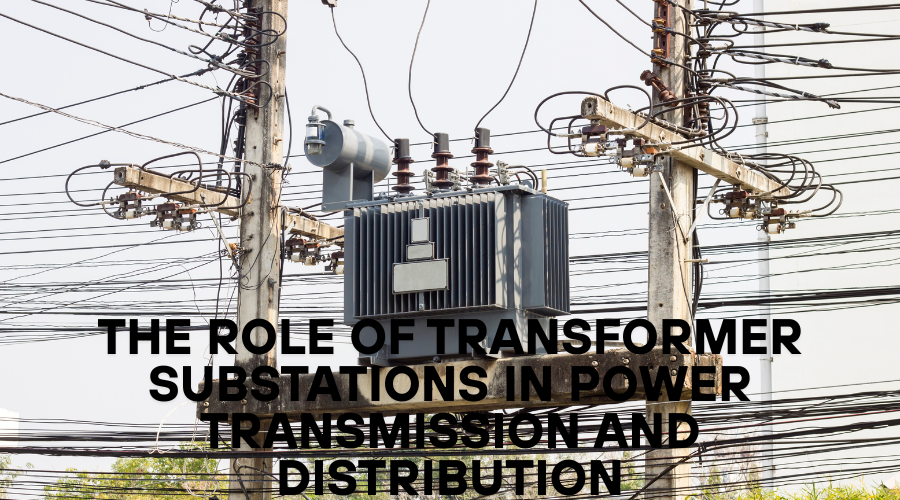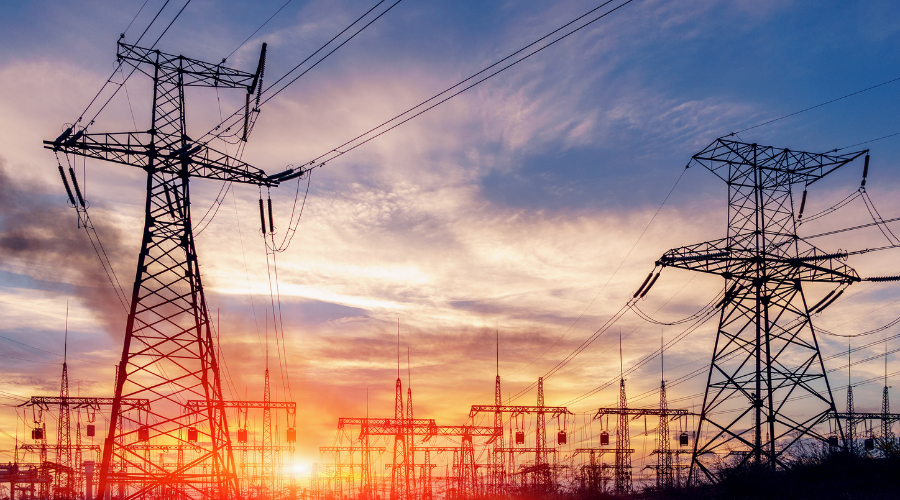


In a huge and complicated world of electrical power systems, transformer substations play a vital role. Its function is to generate electricity at power plants and send it to houses, businesses, and industries efficiently and safely. Mostly operating behind them, these complicated nodes create the electrical infrastructure. It also allows smooth transmission and distribution of electrical energy over long distances and varied grounds. This blog will explain some points related to transformer substations in power transmission. We will also highlight its functions in this conversation. So, let's begin.
A transformer substation is a facility that provides electrical equipment streamlined to change the voltage of electricity. This happens as it moves from one part of the power system to another. These substations are necessary in entering up voltage for long-distance transmission and stepping it down for distribution to end users.
Substations may consist of various major objects, including:
Transformers: They are the major equipment. However, they are used to increase or reduce voltage levels.
Switchgear: They are used for a number of reasons. Those reasons are to control, protect, and separate electrical equipment.
Busbars: They are conductors that distribute power to outer lines.
Circuit Breakers and Isolators: They exist there for the sake of safety and maintenance.
Control or Monitoring Systems: They are used for well-planned operation and fault detection.

To understand the function of transformer substations, it's assisting to follow the journey of electricity from the start of generation to a common user.
Production: Electricity is produced at power plants. To make it happen, they use several energy sources. The names of these sources are fossil fuels, nuclear, hydro, solar, or wind. These plants usually produce power at voltages. They range from 11kV-33kV.
Step-Up Substations: High voltages decrease energy loss across long distances. The electricity is sent to a step-up transformer substation. It extends the voltage to transmission levels, generally between 110kV and 765kV. The high-voltage electricity is then stepped in via transmission lines across huge long distances.
Transmission Network: These high-voltage transmission lines carry electricity not only across regions but also even countries. They also reduce losses and ensure a balanced power flow.
Step-Down Substations: Upon approaching the areas where the electricity is required, step-down transformer substations decrease the voltage to levels suitable for distribution. It is generally between 11kV and 66kV.
Distribution Network: In the end, electricity makes its way into the distribution network. It is a place where further localized step-down transformers bring voltage levels down to usable levels that is 230V or 400V for houses and businesses.
Transformer substations are available in several kinds. We are explaining each here below:
These substations are basically responsible for stepping up or down voltages within the transmission network. They mostly connect multiple transmission lines and may operate at severely high voltages.
These are the final substations before electricity is sent to consumers. They step down the voltage to a level suitable for houses and commercial buildings. Then, they connect to local distribution lines.
Though they may not consist of transformers, these substations are complex for routing electricity, managing grid load, and eliminating faults.
Converter substations are used in high-voltage direct current (HVDC) systems. These substations turn AC to DC or, conversely, allow well-organized long-distance transmission.
They are located in villages where space is limited. These are compact and housed underground or within buildings, helping reduce environmental and look-wise impact.
Transformer substations have a purpose that surpasses simply changing voltage. Several functions they play are important for peace, secure and efficient outcomes.
Transformers within substations manage voltage levels, making sure that electricity is transmitted and distributed at the best voltages. Thus, minimizing energy lose and maintaining power quality.
Substations detect and adjust power flows according to demand. They help balance the load across different parts of the grid to avoid overloading any single object.
Substations are equipped with proactive devices that monitor faults, short circuits, or overloads. In case of problems, these systems can eliminate issue areas to prevent huge outages or equipment harm.
By linking up several parts of the grid, substations give operators the ability to redirect power flow, schedule maintenance, or respond to emergencies without distorting service.
As sustainable energy sources like wind and solar become more frequent, substations are the solution to integrate these often-variable inputs into the grid. They also manage their voltage and balance them with old-generation sources.
With the arrival of the smart grid, transformer substations are developing. Advanced substations now mix modern monitoring, automation, and communication technologies. These smart substations enhance grid reliability and efficiency by allowing real-time data collection, remote control, predictive maintenance, and instant response to grid disturbances.
Here are some of the attributes of smart substations:
Digital relays and sensors for exact fault detection.
SCADA systems (Supervisory Control and Data Possession) for centralized control.
IoT devices for asset detection and data analytics.
Cybersecurity steps to safeguard the digital threats.
Environmental and Safety Considerations
Transformer substations are designed with a strong emphasis on safety and environmental stewardship. The steps that should be considered are:
Reduce electromagnetic field (EMF) exposure.
Contain possible oil leaks from transformers to prevent soil and water contamination.
Use fire-eliminating systems in case of equipment failure.
There should be noise-decreasing barriers and soundproofing in populated areas.
Transformer substations are the unsung heroes of our enhanced power systems. Without them, it would not be possible to send electricity from distant power plants to the socket in your wall safely and efficiently as the energy landscape changes. With growing demand, renewable energy combination, and the push for advanced infrastructure, substations will stay in the core of a trustworthy, resilient, and sustainable electric grid.
Understanding the role and operation of transformer substations not only shows their technical significance, but also their impact on our daily routine. Whether you are pushing on a light switch, or charging an electric car, it can only happen because of a transformer substation.
Generally, what is the Lifespan of a Substation Transformer?
Well, the lifespan of a substation transformer is certainly 20-30 years. But, if you take good care of them, they can last even longer.
What is the Function of a Transformer in Substations?
Substation transformers play a crucial role in adjusting voltage levels. It is to ensure efficient, safe and trustworthy distribution of electrical energy. This process occurs in two important kinds: step-up and step-down.
Are Transformers only for AC?
Certainly, transformers only work for AC. However, the full form of AC is “Alternative Current”.
The advent of smart grids has changed how electric power is produced, distributed, and consumed.
READ FULLHigh Voltage Switchgear It is a
READ FULLTransformer substations are like the core of our electrical systems. They transfer power to our h
READ FULL